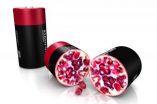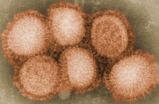(Press-News.org) Hyperactivity of our immune system can cause a state of chronic inflammation. If chronic, the inflammation will affect our body and result in disease. In the devastating disease multiple sclerosis, hyperactivity of immune cells called T-cells induce chronic inflammation and degeneration of the brain. Researchers at BRIC, the University of Copenhagen, have identified a new type of regulatory blood cells that can combat such hyperactive T-cells in blood from patients with multiple sclerosis. By stimulating the regulatory blood cells, the researchers significantly decreased the level of brain inflammation and disease in a biological model. The results are published in the journal Nature Medicine.
Molecule activate anti-inflammatory blood cells
The new blood cells belong to the group of our white blood cells called lymphocytes. The cells express a molecule called FoxA1 that the researchers found is responsible for the cells' development and suppressive functions.
"We knew that some unidentified blood cells were able to inhibit multiple sclerosis-like disease in mice and through gene analysis we found out, that these cells are a subset of our lymphocytes expressing the gene FoxA1. Importantly, when inserting FoxA1 into normal lymphocytes with gene therapy, we could change them to actively regulate inflammation and inhibit multiple sclerosis, explains associated professor Yawei Liu leading the experimental studies.
Activating own blood cells for treatment of disease
FoxA1 expressing lymphocytes were not known until now, and this is the first documentation of their importance in controlling multiple sclerosis. The number of people living with this devastating disease around the world has increased by 10 percent in the past five years to 2.3 million. It affects women twice more than men and no curing treatment exists. The research group headed by professor Shohreh Issazadeh-Navikas from BRIC examined blood of patients with multiple sclerosis, before and after two years of treatment with the drug interferon-beta. They found that patients who benefit from the treatment increase the number of this new blood cell type, which fight disease.
"From a therapeutic viewpoint, our findings are really interesting and we hope that they can help finding new treatment options for patients not benefiting from existing drugs, especially more chronic and progressive multiple sclerosis patients. In our model, we could activate lymphocytes by chemical stimulation and gene therapy, and we are curios whether this can be a new treatment strategy", says professor Shohreh Issazadeh-Navikas.
And this is exactly what the research group will focus on at next stage of their research. They have already started to test whether the new FoxA1-lymphocytes can prevent degradation of the nerve cell's myelin layer and brain degeneration in a model of progressive multiple sclerosis. Besides multiple sclerosis, knowledge on how to prevent chronic inflammation will also be valuable for other autoimmune diseases like type 1 diabetes, inflammatory bowel disease and rheumatoid arthritis, where inflammation is a major cause of the disease.
INFORMATION:
The research was conducted in collaboration with the Danish multiple Sclerosis Centre and Centre d'Esclerosi Múltiple de Catalunya in Barcelona. The research was supported by grants from the Danish Multiple Sclerosis Society, the Lundbeck Foundation, and the Danish Independent Research Council.
New blood cells fight brain inflammation
2014-02-17
ELSE PRESS RELEASES FROM THIS DATE:
Iowa State University's Wintersteen talks partnerships at national science meeting
2014-02-17
AMES, Iowa – Wendy Wintersteen, dean of Iowa State University's College of Agriculture and Life Sciences, spoke on Sunday of the importance of public-private partnerships in strengthening global food security during the annual meeting of the American Association for the Advancement of Science in Chicago.
During her talk, part of a panel on research and development for sustainable agriculture and food security, Wintersteen stressed the importance of partnerships in providing the innovation necessary to meet global challenges.
She said climate change, pests, plant ...
Scientists call for new stewardship of the deep ocean: Earth's last frontier
2014-02-17
The deep ocean, the largest domain for life on earth, is also its least explored environment. Humans are now encroaching more vigorously than ever into the ocean's deep regions, exploiting the deep's resources and placing its wealth of vibrant habitats and natural services for the planet at risk.
Lisa Levin, a biological oceanographer at Scripps Institution of Oceanography at UC San Diego, believes the vital functions provided by the deep sea—from carbon sequestration to nurturing fish stocks—are key to the health of the planet. As humans ramp up exploitation of deep-sea ...
Researchers rejuvenate stem cell population from elderly mice, enabling muscle recovery
2014-02-17
STANFORD, Calif. — Researchers at the Stanford University School of Medicine have pinpointed why normal aging is accompanied by a diminished ability to regain strength and mobility after muscle injury: Over time, stem cells within muscle tissues dedicated to repairing damage become less able to generate new muscle fibers and struggle to self-renew.
"In the past, it's been thought that muscle stem cells themselves don't change with age, and that any loss of function is primarily due to external factors in the cells' environment," said Helen Blau, PhD, the Donald and Delia ...
New 'pomegranate-inspired' design solves problems for lithium-ion batteries
2014-02-17
An electrode designed like a pomegranate – with silicon nanoparticles clustered like seeds in a tough carbon rind – overcomes several remaining obstacles to using silicon for a new generation of lithium-ion batteries, say its inventors at Stanford University and the Department of Energy's SLAC National Accelerator Laboratory.
"While a couple of challenges remain, this design brings us closer to using silicon anodes in smaller, lighter and more powerful batteries for products like cell phones, tablets and electric cars," said Yi Cui, an associate professor at Stanford ...
Worldwide study finds that fertilizer destabilizes grasslands
2014-02-17
Lincoln, Neb., Feb. 17, 2014 -- Fertilizer could be too much of a good thing for the world's grasslands, according to study findings to be published online Feb. 16 by the journal Nature.
The worldwide study shows that, on average, additional nitrogen will increase the amount of grass that can be grown. But a smaller number of species thrive, crowding out others that are better adapted to survive in harsher times. It results in wilder swings in the amount of available forage.
"More nitrogen means more production, but it's less stable," said Johannes M.H. Knops, a University ...
Study on flu evolution may change textbooks, history books
2014-02-17
A new study reconstructing the evolutionary tree of flu viruses challenges conventional wisdom and solves some of the mysteries surrounding flu outbreaks of historical significance.
The study, published in the journal Nature, provides the most comprehensive analysis to date of the evolutionary relationships of influenza virus across different host species over time. In addition to dissecting how the virus evolves at different rates in different host species, the study challenges several tenets of conventional wisdom, for example the notion that the virus moves largely ...
CU-Boulder stem cell research may point to new ways of mitigating muscle loss
2014-02-17
New findings on why skeletal muscle stem cells stop dividing and renewing muscle mass during aging points up a unique therapeutic opportunity for managing muscle-wasting conditions in humans, says a new University of Colorado Boulder study.
According to CU-Boulder Professor Bradley Olwin, the loss of skeletal muscle mass and function as we age can lead to sarcopenia, a debilitating muscle-wasting condition that generally hits the elderly hardest. The new study indicates that altering two particular cell-signaling pathways independently in aged mice enhances muscle stem ...
Years after bullying, negative impact on a child's health may remain
2014-02-17
BOSTON (Feb. 17, 2014) —The longer the period of time a child is bullied, the more severe and lasting the impact on a child's health, according to a new study from Boston Children's Hospital published online Feb. 17 in Pediatrics. The study is the first to examine the compounding effects of bullying from elementary school to high school.
"Our research shows that long-term bullying has a severe impact on a child's overall health, and that its negative effects can accumulate and get worse with time," says the study's first author Laura Bogart, PhD, from Boston Children's ...
Why does the brain remember dreams?
2014-02-17
This news release is available in French. Some people recall a dream every morning, whereas others rarely recall one. A team led by Perrine Ruby, an Inserm Research Fellow at the Lyon Neuroscience Research Center (Inserm/CNRS/Université Claude Bernard Lyon 1), has studied the brain activity of these two types of dreamers in order to understand the differences between them. In a study published in the journal Neuropsychopharmacology, the researchers show that the temporo-parietal junction, an information-processing hub in the brain, is more active in high dream recallers. ...
Transfer of knowledge learned seen as a key to improving science education
2014-02-16
CHICAGO -- (Feb. 16, 2014) -- Attendees of a workshop at the annual meeting of the American Association for the Advancement of Science will be immersed into "active learning," an approach inspired by national reports targeting U.S. science education, in general, and, more specifically, the 60 percent dropout rate of students in science, technology, engineering and mathematics (STEM).
"The goal of this session is to take many ideas around improving science education that are out there and make them applicable to the classroom," says Eleanor "Elly" V.H. Vandegrift, associate ...


